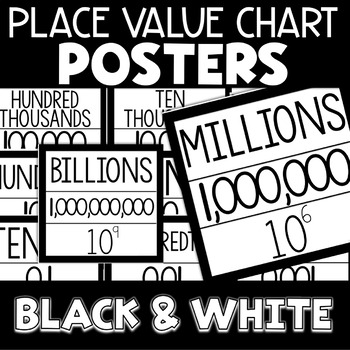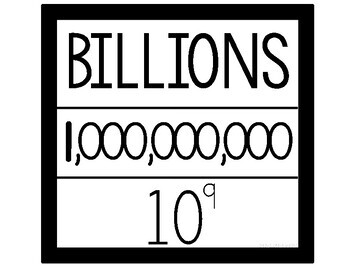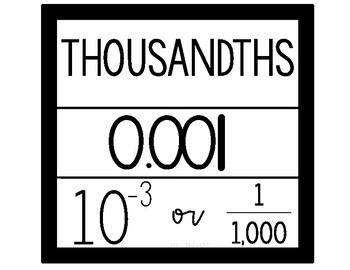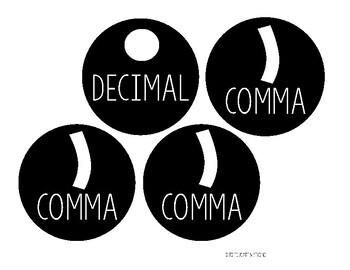Place Value Chart Posters - Black and White Theme
To Educate and Beyond
1.7k Followers
Grade Levels
PreK - 12th, Homeschool
Subjects
Resource Type
Standards
CCSSK.NBT.A.1
CCSS1.NBT.B.2
CCSS1.NBT.B.2a
CCSS2.NBT.A.1
CCSS2.NBT.A.1a
Formats Included
- PDF
Pages
21 pages
To Educate and Beyond
1.7k Followers
What educators are saying
The black and white place value was very clear and easy for my students to see as we begin our school year. Thanks!
Description
Beautiful black and white themed place value chart posters! Includes BILLIONS to the THOUSANDTHS place. Decimal, commas, and place value understanding (dividing by 10 and multiplying x 10) circle cut outs are included! Not editable.
Check Out My Other Place Value Charts!
If you have any issues, please email me directly at: toeducateandbeyond@gmail.com
Thank you! Please rate this resource!
© - 2019 - To Educate and Beyond - Anna Monteil. Single classroom use only. For use in multiple classrooms, please purchase additional licenses at a discounted price.
Total Pages
21 pages
Answer Key
Does not apply
Teaching Duration
Lifelong tool
Report this resource to TPT
Reported resources will be reviewed by our team. Report this resource to let us know if this resource violates TPT’s content guidelines.
Standards
to see state-specific standards (only available in the US).
CCSSK.NBT.A.1
Compose and decompose numbers from 11 to 19 into ten ones and some further ones, e.g., by using objects or drawings, and record each composition or decomposition by a drawing or equation (e.g., 18 = 10 + 8); understand that these numbers are composed of ten ones and one, two, three, four, five, six, seven, eight, or nine ones.
CCSS1.NBT.B.2
Understand that the two digits of a two-digit number represent amounts of tens and ones. Understand the following as special cases:
CCSS1.NBT.B.2a
10 can be thought of as a bundle of ten ones - called a “ten.”
CCSS2.NBT.A.1
Understand that the three digits of a three-digit number represent amounts of hundreds, tens, and ones; e.g., 706 equals 7 hundreds, 0 tens, and 6 ones. Understand the following as special cases:
CCSS2.NBT.A.1a
100 can be thought of as a bundle of ten tens - called a “hundred.”





